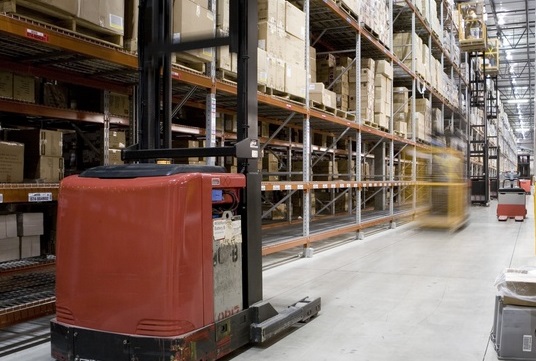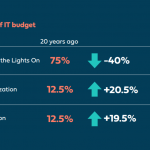Supply Chain (SCM/SCE)
Supply Chain Management (SCM) Software, Supply Chain Optimisation, Supply Chain Execution, hardware transport, supply-chain, distribution software, freight software and load planning in manufacturing and supply chain applications.DHL unveils its supply chain of the future

Strategic adoption of robots, AI and self-driving vehicles will bring flexibility and reduced costs for omnichannel companies.
As companies struggle to implement omnichannel, they lean more and more on logistics providers.
DHL Supply Chain is taking advantage of the trend, investing $300 million in emerging technologies at 350 of its 430 North American facilities to reduce costs while adding flexibility to its services.
The initiative is designed to help e-commerce customers grow their business by improving visibility, increasing efficiencies and reducing complexity, according to Fred Takavitz, Senior Vice President at DHL (Exel) Supply Chain.
“It’s about trying to remove obstacles that we see in the business and that our customers experience,” Takavitz said.
The traditional supply chain is no longer enough
DHL works with clients in the life sciences, healthcare, automotive and technology industries, all of which have a growing need to support rapid fulfillment with flexible options that enable consumers to pick up and return products anywhere at any time.
In a recent report, DHL found 65% of responding companies said the growth of e-commerce and its implications on service had a “significant impact” on their supply chain. Many organizations found traditional supply chains simply can’t support the omnichannel experience.
It’s a shift that is prompting companies to seek out technology that can support faster delivery times and more effectively manage fluctuating demand. Or, to seek out partners that can help them adapt to a greater use of data, use more strategic facility locations and deploy collaborative robots or other emerging technologies that support greater efficiencies.
DHL is already leveraging emerging technologies in 85 of its 430 facilities in North America and has experienced productivity gains of as much as 25% while increasing throughput capacity by as much as 30%.
One size does not fit all
The technologies DHL will deploy in this next round of investments will vary by location needs and the outcomes of pilot programs. They will include picking robots, artificial intelligence applications and self-driving vehicles.
One notable thing the logistics provider has done is develop site technology roadmaps to identify the right use cases for specific applications. Mike Kreider, Vice President of IT Americas at DHL Supply Chain, said that it has helped create a standard to leverage across many sites.
“We’re standardizing our IT Platforms and the system integration to these new technologies, so that we can lower the costs and facilitate rapid implementations,” Kreider said.
The strategy has been in place at DHL since at least May 2018, when the company released MySupplyChain, a customizable platform enabling users to access track-and-trace, inventory, operational performance and business analytics data from any device.
That same month, the 3PL also unveiled its Americas Innovation Center in Rosemont, Illinois — a 24,000 square-foot facility designed to showcase existing use cases for emerging technologies and foster the development of future solutions.
People + Technology = A ‘more flexible’ supply chain
Rather than use technology to replace humans, DHL is using a “people + technology” philosophy that combines the two to create a “simpler, more flexible, more capable” supply chain, Carl Behn, Vice President of IT at DHL Supply Chain said.
One example of this is in the deployment of cobots to work side-by-side with humans. The combination increases productivity two-fold and enables DHL to accommodate its e-commerce peak day demand while reducing short-term labor dependencies, Behn said. When combined with warehouse mapping and technology roadmaps, they can quickly shift robots around to support humans.
“We find that from a flexibility perspective that once the warehouse is mapped, we can add additional robots very easily, literally within minutes, and we can move these robots from one warehouse to another because they are not bolted to the floor,” Behn said.
Behn said cobots have “energized” the workforce and improved employee satisfaction by reducing workloads and reducing low-value activities, Behn said. Greater availability of data is also enabling DHL to improve labor planning and maximize fulfillment capacity while still managing a lower customer cost per unit. When combined with artificial intelligence, it enables them to dynamically assign work within warehouse operations and make real-time adjustments as volatile e-commerce demand flows through the facilities.
“We can really optimize each of our associates’ workload to achieve what our customer service levels are requiring,” Kreider said.
While many of these technologies have been on the market for at least a few years, what is happening is a trend of more maturity in the combination of artificial intelligence, being able to make better predictions and improved decisions. “The maturation [of emerging technologies] is going to happen very rapidly over the next couple of years,” Behn said.
Through continuous investment and incremental improvements, emerging technologies can add speed and cost savings across an entire supply chain, Takavitz said. He noted that simple improvements in the loading and unloading of trailers through autonomous vehicles could yield significant efficiency gains when spread across DHL’s hundreds of facilities.
“We’ve only scratched the surface in terms of what the potential is with these kinds of emerging technologies,” Takavitz said.









